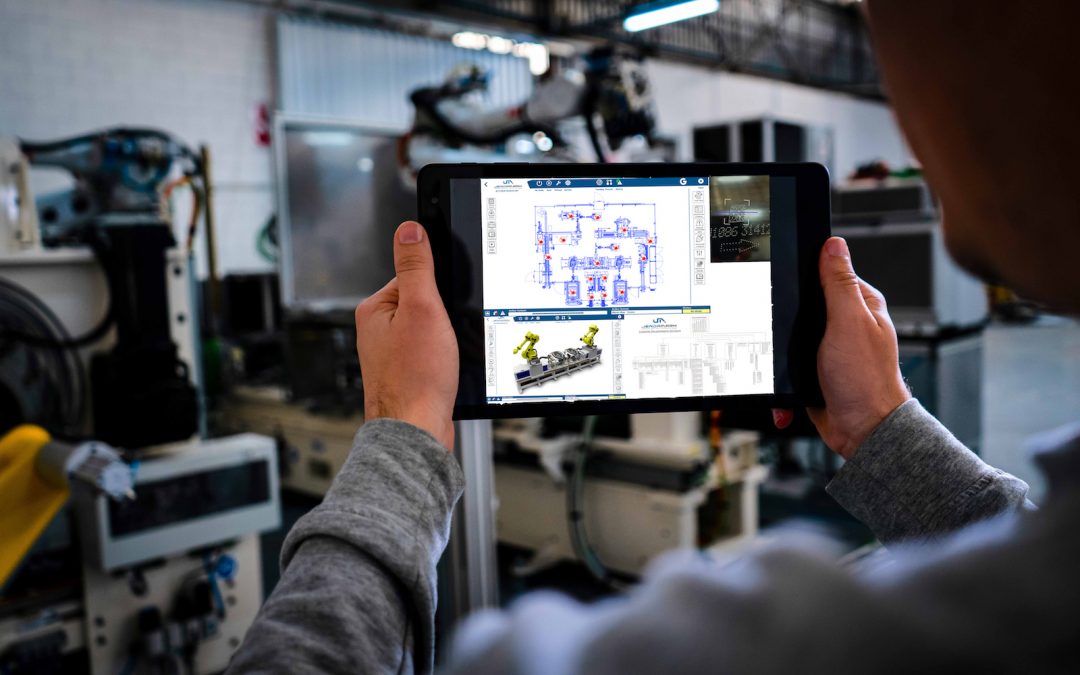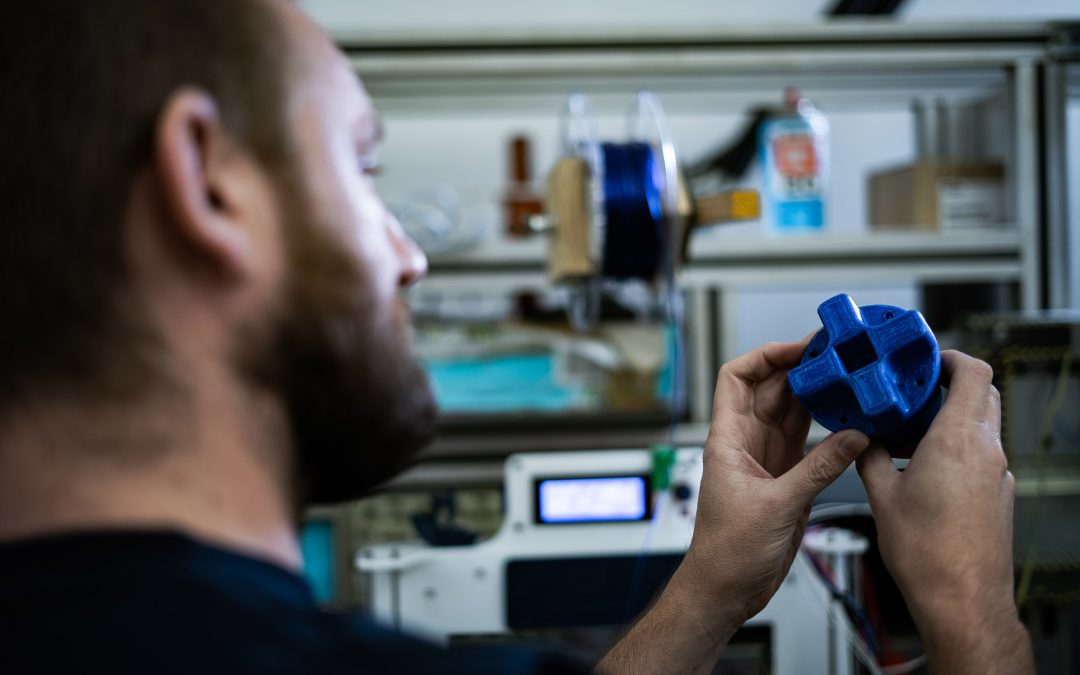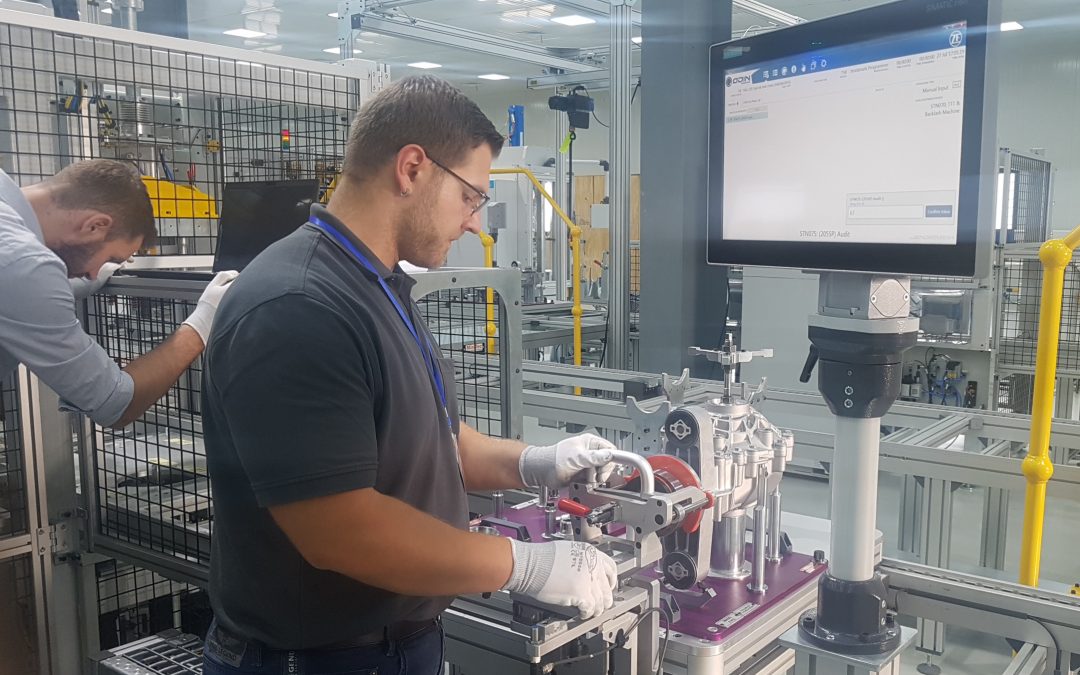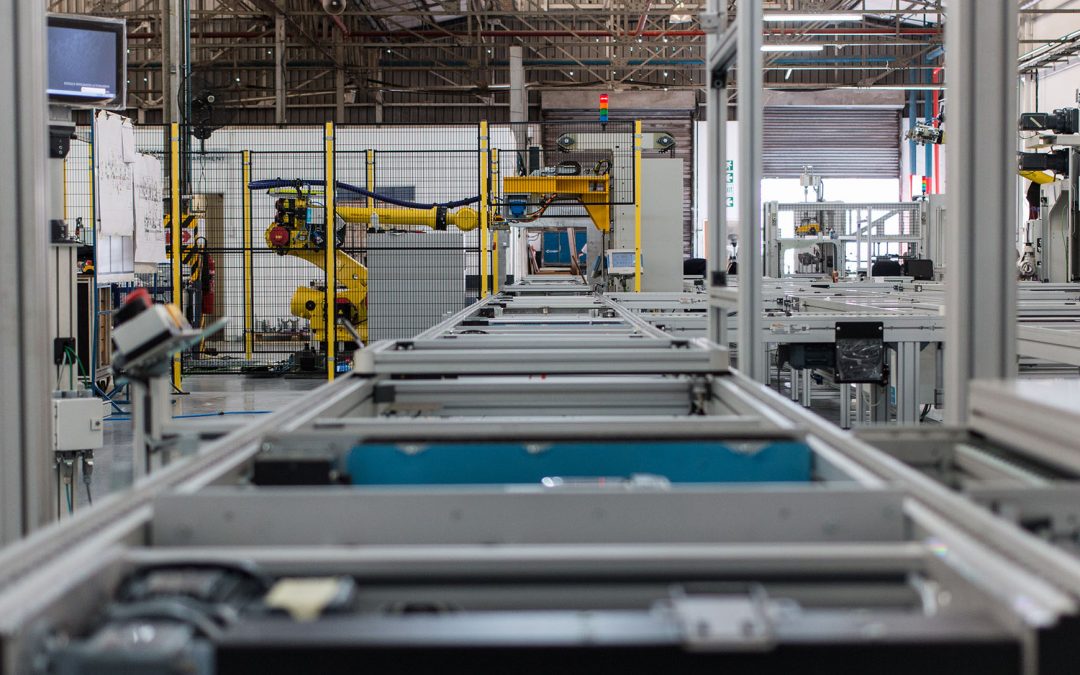
by Good News Lab | Nov 9, 2018 | Industry 4.0, Jendamark Junction
Adding a predictive maintenance element to an already efficient automotive assembly line can add unnecessary costs. Jendamark has found a better way to predict machine downtime, which will soon be added as the fourth module to its Odin software platform.
“Typically, a well-maintained machine runs at the industry standard of 95% uptime,” says Yanesh Naidoo.
“It’s already very efficient and the potential 5% improvement doesn’t justify the cost of adding a smart machine or artificial intelligence element that has to analyse data from various machines from scratch, look for abnormal trends, determine the reason for these trends and then take corrective action.”
Naidoo says when it comes to predicting what could go wrong with a machine, the smart solution would be to mine the rich quality data that Jendamark has already been gathering for the past 20 years.
“We’re confident that there is a relationship between the machine downtime and the quality data. When a machine does go down, it can generally be narrowed down to a handful of possible causes.
“Because we already know the outcome, the reverse analysis is much simpler, making downtime easier to predict – without huge cost implications.”

by Good News Lab | Nov 8, 2018 | Industry 4.0, Jendamark Junction
More commonly known as 3D printing, additive manufacturing is gaining momentum in the quest for lightweight parts and minimum material waste.
Instead of machining away metal to fashion a part, additive manufacturing builds it up from scratch, using only the material needed.
“The other big advantage is the idea of topology optimisation – redesigning a part to make it lighter in weight,” says Yanesh Naidoo.
This, Naidoo says, allows for complex lattice-like design, not unlike the bone structure of birds, which is strong but could reduce weight by up to 70%.
“This is a big goal for the automotive industry because it would make cars easier to run on smaller engines. Our assembly machines would in turn require less powerful motors, which would increase their longevity and reduce costs.”
While metal 3D industrial printers remain prohibitively expensive, Jendamark is exploring using industrial robots with MIG weld guns to build up parts.
“The structural integrity still needs to be tested but if it proves successful, a designer could print raw materials overnight and put them into the machine shop the next day,” says Naidoo, adding that it could shortcut the material purchasing process by weeks.
Jendamark’s 3D printer is used to print plastic components, which are especially useful in the development phase, giving designers a feel for the real thing. The initial testing of lines is also done using these.
“Print-on-demand spares for plastic components, such as air vents, are now accepted in the automotive industry worldwide – especially for older model vehicles, where it is no longer cost effective to produce and store large
volumes that may never be used.”

by Good News Lab | Nov 7, 2018 | Industry 4.0, Jendamark Junction
The success of any Industry 4.0 initiative lies in the ability to capture and analyse big data as part of the human or machine decision-making process. For this to happen, systems must be integrated to enable them to “talk” to each other.
To this end, Jendamark has developed its own standardised software platform called Odin (after the Norse god of wisdom).
“A big part of Industry 4.0 is software,” says Yanesh Naidoo. “We wanted to establish a standardised platform on which all of our software could work. We currently have three modules running on Odin and the number will continue to grow.”
ODIN WORKSTATION
The first module, called WorkStation, is an application that runs on the shop floor. The easy-to-use visual interface guides operators through the component assembly process.
“This is especially useful where different types of engines are built on the same line. The operator doesn’t have to remember each process and becomes more efficient,” says Naidoo.
The application tracks process data, runs diagnostics and includes a traceability interface as part of the quality review process.
“The maintenance interface allows the operator to call the maintenance team from the screen, thereby getting assistance faster and reducing downtime.”
He says the addition of augmented reality “smart glasses” takes this a step further, allowing remote maintenance support “through your eyes”, which Jendamark first used on a recent Audi project in India.
ODIN LINEWATCH
The second module, LineWatch, can be viewed on a screen above the production line or as a computer app.
As a visual snapshot of the entire production process, which interfaces with SAP, it allows managers to keep an eye on all aspects, such as the number of parts produced per shift, those queued, in progress, finished and dispatched, as well as the throughput rate.
Live cycle time data and built-in SMS or email notifications alert relevant groups to progress or problems.
ODIN MANAGER
Manager is a web-based reporting and human-machine interface (HMI) administration system, which can be accessed securely from any web browser.
The HMI set-up and LineWatch software share data with a server, which allows Manager to analyse trends, deliver customised quality reports and track maintenance job cards. Managers can see at a glance the results for a particular part or station.
“The process engineer can set up work instructions and change processes to improve efficiency on the shop floor without the cost of calling a programmer,” says Naidoo. This, he explains, is thanks to Jendamark’s PLC standard, called Cube, which integrates tightly with Odin.
“Your online changes are effected down to the PLC layer on the shop floor.”

by Good News Lab | Nov 6, 2018 | Industry 4.0, Jendamark Junction
The Fourth Industrial Revolution – or Industry 4.0 as it is commonly known – is changing the face of every industry worldwide. Jendamark Automation has mapped a clear path through the technological maze to take automotive customers into the future of manufacturing.
Historically speaking, each of the four industrial revolutions has been set in motion by the advent of a radically different and new technology. But the goals have always been the same: to increase efficiency and reduce manufacturing costs.
“Every project we at Jendamark take on under the banner of Industry 4.0 must improve efficiency or reduce the cost of the product for ourselves or our customers,” says sales and design director Yanesh Naidoo. “Otherwise it’s a pointless exercise.”
Naidoo says there are many ways to achieve these twin goals, and it differs from industry to industry, which is what makes defining Industry 4.0 so problematic.
AN EVOLVING DEFINITION
“At Jendamark, we’ve established our own nine-point definition, which has the potential to add value for our customers and gives us a path to follow moving forward.”
The nine touchpoints are: integrated systems, predictive maintenance, additive manufacturing, augmented reality, the Internet of Things, virtual reality, autonomous robots, block chain and cyber security.
Given the accelerated rate of technological development, Naidoo says the definition is a constantly evolving one, with Jendamark opting to focus only on the first six points at this stage.
“As much as industries grapple with defining Industry 4.0, it is equally difficult to know if you’re ahead of the curve or not. We know that we’re not experts in every one of our focus areas, but we don’t have to be. We understand the possibilities and, where necessary, work with trusted partners to provide the right solutions for our customers.”
INDUSTRY 4.0 VS AUTOMATION
The interesting thing about Industry 4.0, Naidoo believes, is that it is not necessarily synonymous with automation. “It’s first and foremost about elevating efficiency,” he says.
“If a particular country assembles a component manually because labour is plentiful and inexpensive, we need to find a way of making that process more efficient. That doesn’t mean automating it because that’s once again adding cost.”
So, the Industry 4.0 solution would be to make the operator more efficient by, for example, providing augmented reality glasses or making the workstation screen more efficient.
“In a country where everything is already automated because labour is expensive, exploring solutions such as predictive maintenance could increase efficiency by reducing machine downtime,” says Naidoo.



